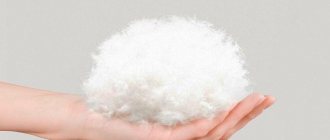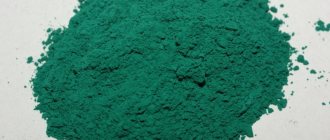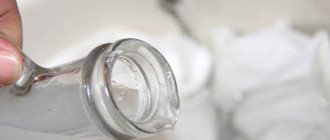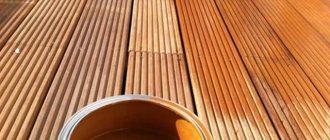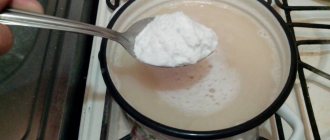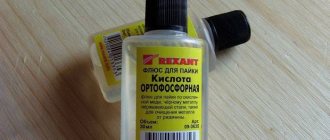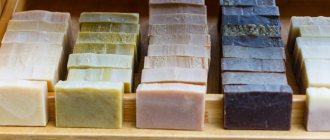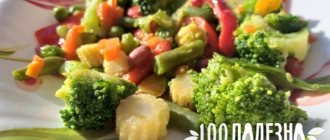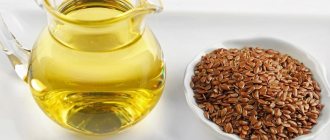Perhaps the most useful preparation for the winter is dried lingonberries. After all, this wild berry, growing in hard-to-reach swampy places, has a large supply of vitamins, microelements, and even a natural antiseptic. It is during drying that the maximum amount of nutrients is retained in lingonberries.
You can dry both whole fruits and berry puree. In the first case, you get an excellent preparation for making medicinal tea or decoction. The second contains an ancient Russian dish, pastila, which can be a healthy alternative to sweets.
Lingonberry marshmallow is good because it can be stored for a very long time without any difficult conditions. This dried dessert can be made with just one ingredient, or you can choose a more complex recipe.
The slight bitterness and sourness of the not too sweet berry in the sugar-free marshmallow recipe will be appreciated by people who are indifferent to sweets. And those with a sweet tooth will most likely like versions of this dish with sugar or honey. Among the lingonberry marshmallow recipes given in this article, everyone can choose an option to suit their taste.
Beneficial features
Lingonberries include organic beneficial acids, carbohydrates, carotene, pectin, and vitamins. The berries contain up to 15% sugar in the form of glucose and fructose, as well as phosphorus, iron, magnesium, and potassium. The leaves of the shrub are rich in tannins, carboxylic acids, and hydroquinone. Lingonberry seeds contain linoleic and linolenic acids.
The benefits of the leaves and berries of the plant have long been studied and proven, have been used in practice for centuries, and are recognized by science. If in
If you include lingonberries in your daily diet, you can avoid vitamin deficiency, bad mood and well-being.
Medicinal properties of lingonberries:
- helps normalize blood pressure;
- excellent diuretic;
- thanks to its antiseptic and bactericidal action, the plant actively fights various infections;
- stimulates the digestion process;
- has an analgesic effect.
Regular consumption of fresh lingonberries strengthens the walls of blood vessels, has an astringent effect, and reduces the level of capillary fragility.
In folk medicine, the plant is known as a wound-healing, tonic, antiscorbutic and antipyretic substance.
Why lingonberry?
The beneficial properties of lingonberries have been known since ancient times. In terms of vitamin C content, this berry can easily compete with citrus fruits: oranges, lemons and grapefruits. It also contains large amounts of vitamins B, E, A and D.
Of the microelements, it contains various minerals. Potassium, iron, phosphorus make lingonberries beneficial for blood vessels and muscles, calcium, magnesium and manganese strengthen joints, the nervous system and also blood vessels and the heart.
Consumption of lingonberries in the autumn-winter period helps to avoid vitamin deficiency and weakening of the body. Moreover, these gifts of nature help maintain the tone of all systems, strengthen the immune system and help fight colds and viral diseases.
In addition, regular consumption of lingonberries in various forms contributes to the treatment of many chronic diseases, such as:
- rheumatism;
- diabetes;
- tuberculosis;
- hepatitis;
- hypertension;
- gastritis;
- measles.
Many doctors recommend this product for various diseases as an additional therapeutic agent. The berries have a strong antipyretic agent. In addition, they help to avoid vitamin deficiency.
Russian sailors always took with them on their trips lingonberries, prepared in various ways, as well as other products prepared using this berry, for example, sauerkraut. It was lingonberries with a large amount of vitamin C that protected Russian sailors from scurvy, a disease from which sailors from other countries suffered. Also, thanks to lingonberries, northern peoples could easily survive harsh and long winters.
Moreover, in past centuries there were no refrigerators, much less freezers and chest freezers. There were no methods for extra-fast freezing, and frozen berries were not sold in stores. All preparations were made by hand, using available tools and recipes proven over centuries. At the same time, lingonberries were collected in August and September, and were stored and used until the summer of next year, that is, more than 9 months.
Lingonberries, like any other berry, are a perishable product. However, they are not as susceptible to rotting or fermenting as raspberries, strawberries, strawberries or blueberries. Lingonberries can remain fresh in room conditions for up to three weeks. However, longer storage requires processing.
The cause of spoilage of lingonberries is usually:
- Air that oxidizes the berries and causes bacteria to multiply.
- Oxidative processes inside the product.
- Dirt, insect remains due to which putrefactive bacteria multiply.
- Fructose and sucrose, which lead to fermentation.
DESCRIPTION
Berries and preparations made from them are mainly associated with sweetness. Although berries, even the sweetest ones, can be used to make wonderful sauces and seasonings.
I dry sour berries, such as lingonberries or cranberries, with salt and aromatic herbs. These berries are an excellent ingredient for pies with cabbage or meat. They are good in pilaf and casseroles. Add a few berries to an omelet, pizza or savory pastries and the taste of the dish will sparkle with new nuances. I also like to serve dried lingonberries with wine. The Ezidri dryer will be a great help for such workpieces!
How to dry lingonberries at home
Lingonberries, which have a specific bitter taste, have gained popularity among chefs.
They are widely used in cooking: preserves, fruit drinks, sauces, compotes, jam, jelly are prepared. To preserve the berries for the winter, they are frozen, filled with boiled water, preserved, and dried. Drying is a good way to preserve lingonberries and is a traditional method of harvesting. It is advisable to process the collected lingonberries very quickly. You can quickly and easily dry lingonberries in an electric dryer.
When drying, lay out the prepared berries in one layer, dry the berries at a temperature of 60°C. During the drying process, turn the berries several times to dry them evenly. Store dried berries in a tightly sealed glass container in a cool, dark place.
Recipes with lingonberry ingredient
Use of dry lingonberry
Dried lingonberries are used both for medicinal purposes and as a food product. In addition to the healing properties already listed, it increases appetite and gives strength to the body.
Teas and decoctions are prepared for treatment, but dried fruits are used more widely in cooking:
- added to yoghurts, muesli and ice cream;
- when baking (add to pancakes, pies);
- when preparing sauces;
- compotes are made from it;
- coated with glaze or simply rolled in powdered sugar (you get healthy candies).
Advice! Before use, the dried product must be soaked for some time to restore and soften.
Nutritional value per serving
% of daily value
Based on your age, weight and activity. Serves as reference information.
Log in or register and we can display your daily intake of proteins, fats and carbohydrates
Basic:
| fresh lingonberries fresh lingonberries Ingredient Lingonberries have a noble and pleasant taste with a slight bitterness; they are used for making drinks, as a filling for baked goods, and as a base for the famous lingonberry sauce. To learn more | 1 kg |
Calorie content of dried lingonberries
The nutritional value of lingonberries is difficult to overestimate. It is a storehouse of vitamins, microelements, amino acids, dietary fiber and proper carbohydrates.
The energy value of the bog native is low, so it is considered a dietary product.
100 g of dried product contains:
- 314 kcal (15.4% daily value);
- carbohydrates – 80.2 g (35.8% of the daily value);
- fat – 1 g;
- proteins – 0.3 g;
- dietary fiber – 2.5 g (23% daily value);
- water – 16 g.
Cooking method
- electric dryer Ezidri Snackmaker FD500,
- High mode 60°C.
- Medium mode (average) 50-55*С
- Sort out the lingonberries, wash and dry. I do this procedure in the carousel for washing greens, it turns out well and with high quality.
- I transfer the berries into a saucepan, prick with a fork, add sugar and leave for a day so that the berries give juice. There is little juice, and dry berries do not release juice well.
- I put the pan with the berries on the fire, brought it until the sugar dissolved, and kept it on low heat for 10 minutes, stirring occasionally with a spoon.
- Place the berries in a sieve, let the juice drain, and cool.
- Place the berries on trays with a mesh and dry first at high temperature, then reduce to medium. The berries dry quickly, and they also release moisture quickly and well. Therefore, I recommend not drying the berries for a long time.
Preparing berries for storage
There are several ways to prepare and store lingonberries at home without using a refrigerator. However, in any case, the berries must be prepared first. Careful preparation will help avoid rotting or souring of the berries. Preparation is divided into 3 main stages:
- Sorting or selection.
At this stage, all the berries are carefully laid out on a flat surface. In an even layer, rotten, spoiled, crushed or insect-eaten specimens will be immediately noticeable. This is a very labor-intensive process that takes a lot of time and requires high concentration. However, if at least one rotten berry remains in the batch, then all the work on further harvesting of lingonberries will go down the drain. - Soaking and rinsing.
After all specimens have been selected, they should be washed to remove any remaining soil, sand, debris and dirt. To do this, first fill the lingonberries with water and leave for 10-15 minutes. Then the water is drained and the procedure is repeated 3-4 more times. During this time, adhering dirt, clay and sand will fall away from the berries and they can be finally washed under running water. - Drying
. After washing, it is important to dry the berries. To do this, they are laid out on a dry cloth in one layer, the same as when sorting. A dry cloth will absorb any remaining moisture. After a few hours, the berries can be collected in jars or bowls. Now they are completely ready for harvesting.
Important! The water for soaking and rinsing should be cold.
Steamed berries
The fruits are poured into a pan, which must be covered with a lid and placed in the oven for 2 hours. The set temperature is 160 degrees.
The door should be kept ajar to allow moisture to evaporate. Then pour it into a jar, which should be sterilized in advance and immediately closed with a plastic lid.
Even if the berries suddenly become gray in color and slightly flattened, it’s okay - the valuable qualities will not be lost.
Store in a cool, dark place for several months: cellar, refrigerator or balcony.
Step-by-step recipe with photos
Wash the lingonberries, leaving them in a colander to allow the water to drain. For now, let's grind sea salt with Provençal herbs. How much salt to add and what seasonings are a matter of taste. I cook it not too salty, so that you can snack on a few berries.
While the lingonberries are still wet, sprinkle them with Provençal herbs and salt. Mix thoroughly and gently.
Place baking paper on a baking sheet. Pour in the lingonberries and spread them over the surface, trying not to let the berries bunch up.
Dry in the oven, using convection mode, stirring the berries occasionally. Let's set the temperature to 80–90°C. You can open the oven door a little. Check the readiness of the berries, since the technical characteristics of the stoves are different for everyone. I pulled out the berries slightly soft and dried them at room temperature for a few more hours.
The lingonberries turned out to be dried, and not completely dry. It is better to store such berries in an airtight jar in a cool place.
Lingonberry marshmallow
Perhaps the most useful preparation for the winter is dried lingonberries. After all, this wild berry, growing in hard-to-reach swampy places, has a large supply of vitamins, microelements, and even a natural antiseptic. It is during drying that the maximum amount of nutrients is retained in lingonberries.
You can dry both whole fruits and berry puree. In the first case, you get an excellent preparation for making medicinal tea or decoction. The second contains an ancient Russian dish, pastila, which can be a healthy alternative to sweets.
Lingonberry marshmallow is good because it can be stored for a very long time without any difficult conditions. This dried dessert can be made with just one ingredient, or you can choose a more complex recipe.
The slight bitterness and sourness of the not too sweet berry in the sugar-free marshmallow recipe will be appreciated by people who are indifferent to sweets. And those with a sweet tooth will most likely like versions of this dish with sugar or honey. Among the lingonberry marshmallow recipes given in this article, everyone can choose an option to suit their taste.
Beneficial properties of dried lingonberries
For a long time, lingonberries have been used to treat many diseases. This plant contains beneficial properties from both the berries and the leaves.
Beneficial properties of dried lingonberries:
- thanks to their unique composition, they support the activity of the cardiovascular system (lingonberries contain a lot of vitamins A and C, as well as potassium, magnesium and chromium);
- the diuretic property of the fruit also helps to successfully restore the functioning of the urinary system, fight gout, rheumatism;
- tannins contained in dry lingonberries help remove harmful substances from the body;
- the copper present in it has a positive effect on the body in case of problems with the pancreas and hypertension;
- catechins, pectins, organic acids help improve digestion, increasing acidity in the stomach and stimulating the production of digestive enzymes (therefore, dried lingonberries are useful for chronic pancreatitis, gastritis with low acidity);
- In addition, a fruit drink made from this berry helps quench thirst, relieve intoxication, and improve immunity.
can be used as a natural antiseptic for sore throats, colds, inflammatory diseases of the urinary tract (lingonberries contain a natural antiseptic - benzoic acid);
We must remember that despite the abundance of beneficial properties of dried lingonberries, there are also contraindications to its use.
Calorie content of dried lingonberries
The nutritional value of lingonberries is difficult to overestimate. It is a storehouse of vitamins, microelements, amino acids, dietary fiber and proper carbohydrates.
The energy value of the bog native is low, so it is considered a dietary product.
100 g of dried product contains:
- 314 kcal (15.4% daily value);
- carbohydrates – 80.2 g (35.8% of the daily value);
- fat – 1 g;
- proteins – 0.3 g;
- dietary fiber – 2.5 g (23% daily value);
- water – 16 g.
How to dry lingonberries at home
Lingonberry is one of the abundantly fruiting plants, the fruits of which are harvested in large quantities from August to September. Unfortunately, this berry quickly deteriorates (crumples, rots), so it is necessary to preserve the harvest by preparing a source of nutrients for the winter.
To do this, you need to sort out the collected lingonberries, separating leaves, moss, small twigs and other debris from them, and at the same time removing spoiled berries. And then you can start preparing it in one of many ways (soak in water, make jam or marmalade, rub with sugar, cook compote, dry, etc.).
The greatest amount of useful substances will be preserved in soaked and dried lingonberries. To soak, just rinse the fruits, fill a container with them and fill them with clean water. This preparation will be stored at room temperature until the next harvest. Drying lingonberries will require a lot of effort, but the result will be a product that can be stored for years. In addition, during the drying process, you can prepare a dietary alternative to sweets - marshmallows.
To dry lingonberries you will need an oven or an electric appliance.
How to dry lingonberries in the oven
To prepare dried lingonberries in the oven, you need to preheat it to a temperature of 60 °C. The berries are laid out on a baking sheet in a thin layer (preferably in one).
For convenience, the drying process can be presented step by step:
- Sort the fruits, wash, dry and place on a baking sheet.
- Place the baking sheet in the preheated oven.
- Dry until completely dehydrated (3-4 hours).
- Place the dried product in jars (it is better if they are glass) and close with nylon lids.
How to dry lingonberries in a dryer
It is more convenient to cook lingonberries in an electric dryer (there is no need to control the process or mix the product). However, the process will take longer. If you dry at a temperature of 60 ° C, then delicate fruits may burst, so experienced housewives advise setting the electric dryer to a lower temperature (40–55 ° C). To prevent small berries from falling through and getting crushed in the holes of the grill, you can cover it with gauze.
Main stages of drying:
- Sort out the lingonberries, wash and dry.
- Pour onto the dryer rack in a single layer.
- Dry until completely dry.
- Pour the dried fruits into a jar and cover with a nylon lid.
The cooking time for lingonberries in an electric dryer depends on the set temperature. At 60 °C it will be approximately 12 hours, at 40 °C - up to 16. It is safer to dry at a lower temperature.
Use of dry lingonberry
Dried lingonberries are used both for medicinal purposes and as a food product. In addition to the healing properties already listed, it increases appetite and gives strength to the body.
Teas and decoctions are prepared for treatment, but dried fruits are used more widely in cooking:
- added to yoghurts, muesli and ice cream;
- when baking (add to pancakes, pies);
- when preparing sauces;
- compotes are made from it;
- coated with glaze or simply rolled in powdered sugar (you get healthy candies).
Rules for storing dried lingonberries
To store dried berries, it is better to use glass jars or clay vessels covered with a lid. Shelf life - from 6 to 12 months (until the next fruiting season).
If you grind dried fruits into powder, the jars need to be sealed very tightly. Such a product can be stored for 5 years or even more.
Lingonberry marshmallow at home
You can dry not only whole berries, but also lingonberry puree. The result is a very tasty, long-known dried delicacy - marshmallow. To prepare lingonberry marshmallow, you need to prepare a puree of berries, and then dry it using one of the available methods.
There are two main ways to prepare lingonberry puree:
- From fresh berries. Grind the lingonberries with a blender until a homogeneous mass is obtained (you can strain the puree for a better consistency).
- From pre-steamed fruits, you can simmer lingonberries in a pot or cauldron under a lid (to do this, place the container in an oven heated to 70–80 °C and leave for 3 hours). Or blanch in a saucepan for 10 minutes (per 1 kg of fruit - 1 tbsp. water), stirring constantly until the berries release juice.
Steamed berries are also crushed in a blender and filtered.
General principles for preparing lingonberry marshmallows
Pastila can be prepared with the addition of various ingredients, but the principle of preparation is the same in all cases.
The technology for producing marshmallows comes down to three stages:
- Making puree (using one of the methods described above).
- Boil the mixture (to the consistency of liquid sour cream).
- Preparing lingonberry marshmallows in the dryer (in the oven on parchment, at a temperature of 80 ° C, the process may take 2–6 hours, which depends on the thickness of the layer, in an electric appliance - a little longer).
The dried marshmallow will easily separate from the parchment paper. When ready, it can be cut into pieces, sprinkled with powdered sugar and placed in a storage container.
Making lingonberry marshmallows in a dehydrator is a fairly simple process, although it does require time.
Lingonberry marshmallow without sugar
This recipe is the simplest. All you need is lingonberries. Preparation steps:
- The puree can be prepared in any way, but more beneficial properties will be preserved when using the option without thermal effects on the fruit.
- Place the resulting mass on a baking sheet (layer thickness should not exceed 3 mm) and place in the oven for 2 hours.
- Place another one on the dry layer and send it to dry again (you should get 4-5 layers in total, but you can do less).
- Cut the finished marshmallow into slices and store in a dry, dark place.
Lingonberry marshmallow with honey
Lingonberry marshmallow with the addition of honey has a pleasant taste and aroma, and also carries the beneficial properties of forest berries and flower nectar. For 1 kg of lingonberries take approximately 400 g of honey.
- Lingonberry puree is boiled down a little, then allowed to cool.
- Combine the berry mass with honey and mix thoroughly until smooth (you can beat it).
- Dry the resulting mixture as usual, in thin layers.
- The finished marshmallow is cut into pieces and stored in a dry, dark place.
To prepare this marshmallow, rapeseed honey is usually used, which crystallizes better.
Recipe for lingonberry marshmallows with sugar
Lingonberry pastille with sugar will replace candy for those with a sweet tooth, and it is much healthier. For 1 kg of berries you will need 200 g of granulated sugar.
- Add sugar to the finished puree, stirring the mixture constantly.
- When the sugar crystals are completely dissolved, the mass is boiled until thickened.
- Next, dry using one of the standard methods.
- The finished marshmallow is cut into beautifully shaped pieces and packaged for storage.
Lingonberry and apple pastille
The most popular fruits for making marshmallows are apples. The puree from them is well beaten, and the lingonberry marshmallow with the addition of apple becomes airy.
To prepare this delicacy you take:
- apples – 6 pcs.;
- lingonberries - 4 tbsp.;
- granulated sugar – 1.5 tbsp.
- Lingonberries and apples, peeled and cored, are steamed together and ground into puree.
- Add sugar and stir the mixture until it is completely dissolved and beat.
- To dry, spread the mass in a thin layer (3–4 mm) and send it to the dehydrator until completely dry, then repeat the process, increasing from 3 to 5 layers (you can make the pastille single-layer, then it is not cut, but simply rolled into a roll).
- The dried product is cut into cubes and placed in a container.
Antonovka pastila does not require boiling and turns out especially tasty.
Delicious lingonberry pastille with blueberries
Lingonberries and blueberries often coexist in the forest, and the combination of the bitterness of the former and the tart sweetness of the latter is very successful.
To prepare pastille you will need:
- 1 kg of lingonberries;
- 0.5 kg blueberries;
- 300 g sugar.
- Mix the berry puree with granulated sugar and stir until the crystals are completely dissolved.
- Beat the mixture in a blender until thick.
- The homogeneous mass is spread on a tray in a thin layer, dried, and the process is repeated, increasing the layers.
- The finished dried sweet is cut into pieces and placed in storage containers.
Rules for storing lingonberry marshmallows
The marshmallow can be stored as a whole sheet (for convenience, it is rolled into a roll and tied with twine). But it’s more convenient to pack sweets cut into pieces.
For the best option, it is better to place the dried preparation in a glass container and store it in the refrigerator. If there is a lot of marshmallow and it is expected to be stored for a long time, then the product is placed in a sealed bag and frozen.
Conclusion
Among all the healthy products that boost immunity and improve health, it is difficult to find a more delicious one than dried lingonberries. The wide range of uses of this berry in cooking makes it increasingly popular. It is safe to say that regular consumption of dried lingonberries is the path to health and longevity.


